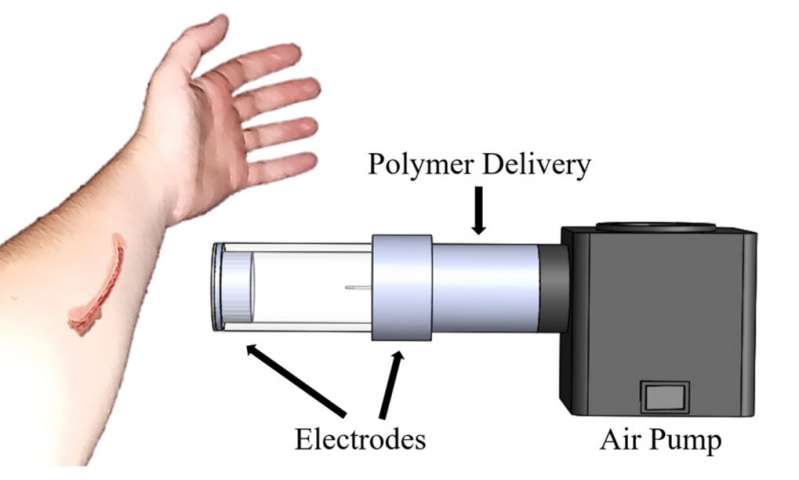
Spray painting fiber bandages onto wounds
A group of researchers at Montana Technological University has developed a portable electro-spinning device with a confined electric field that can safely deposit bandages and drugs directly onto biological surfaces. The group describes the instrument—which they call the electrostatic and air driven device—in the Journal of Vacuum Science & Technology B.
Instead of using the voltage difference between the tool and a surface to deposit the fibers, the new device uses air to spray the fibers out onto the surface, like a can of spray paint.
In spray painting, pressurized gas forces direct particles toward a surface, creating a sort of deposited material.
Like spray painting, the device is used by directing its nozzle at the desired surface during operation, causing a fiber mat to be deposited onto that surface.
By applying this spray paint-like mechanism, this device can be used to cover wounds and provide controlled drug release over time. The deposited fibers adhere to materials containing internal moisture, such as human skin.
Though use of electro-spun fibers for effective drug delivery has been established in the past, previous methods have required a wound to be placed directly into the electric field path. In that configuration, the only safe option is predepositing fibers onto a surface, such as parchment paper, to collect and store for later use. The device has been tested on a porcine skin incision as well as a gloved human hand and is the first demonstration of depositing the drug-delivering fibers directly onto a wound site safely.
The researchers hope this new technology will be used to aid doctors, first responders and other medical personnel with wound treatment in rural areas, where immediate medical care may not be readily available.
The bandage material, as well as the drug used, can be chosen on demand as the situation warrants, making modular and adaptable drug delivery accessible in remote locations.
 English
English Arabic
Arabic


